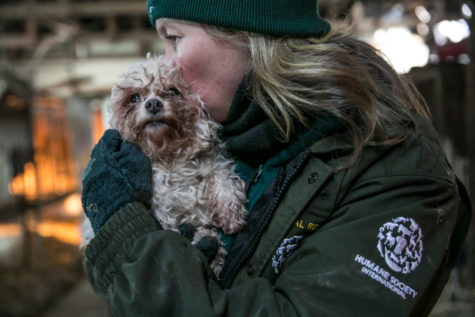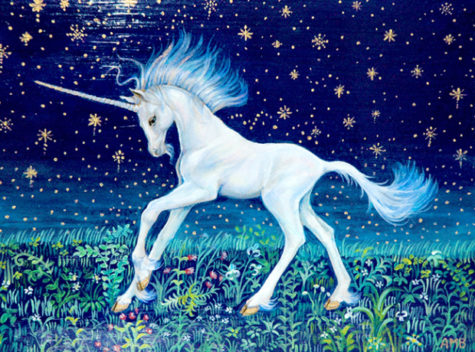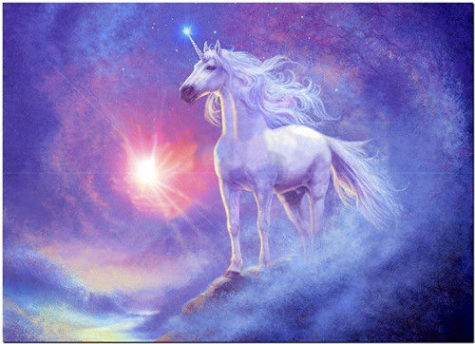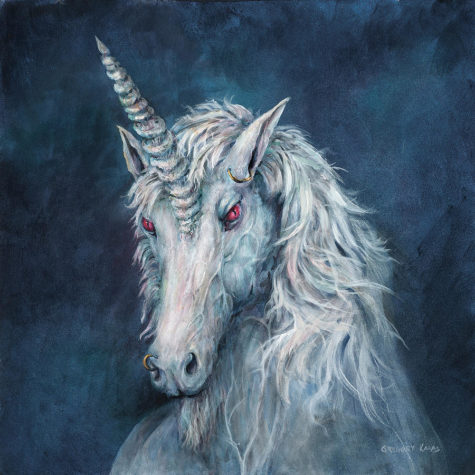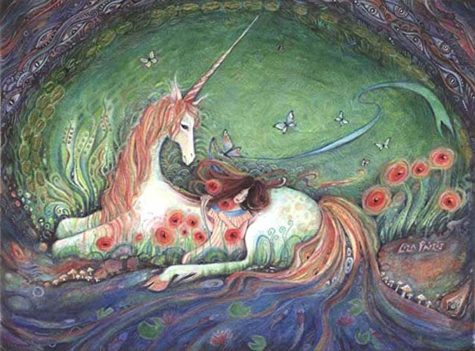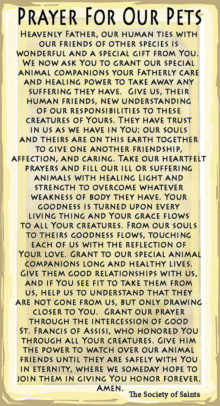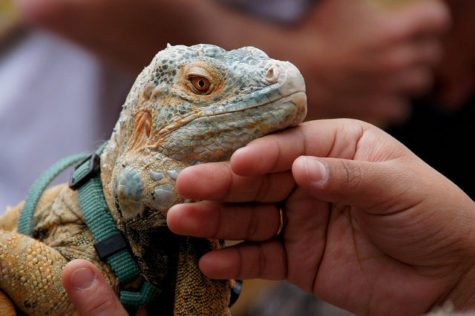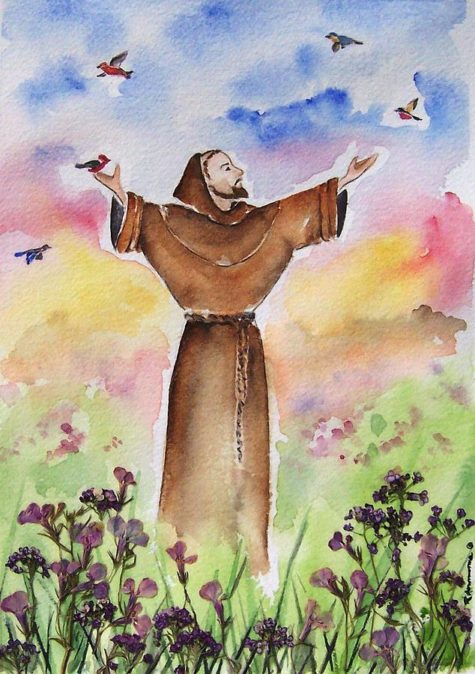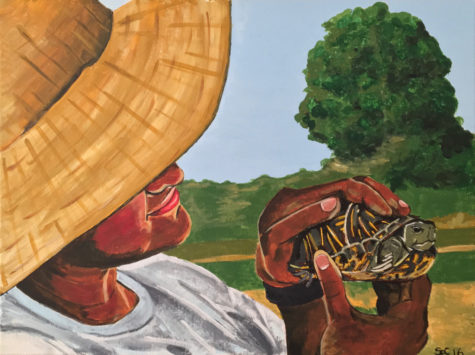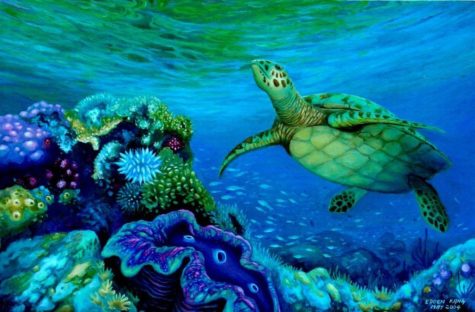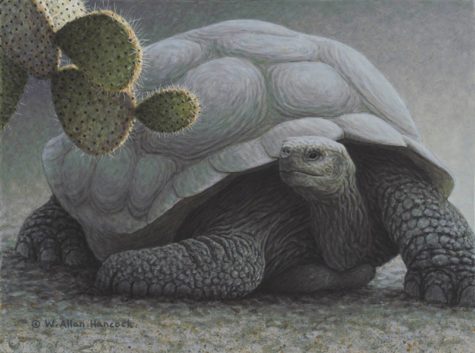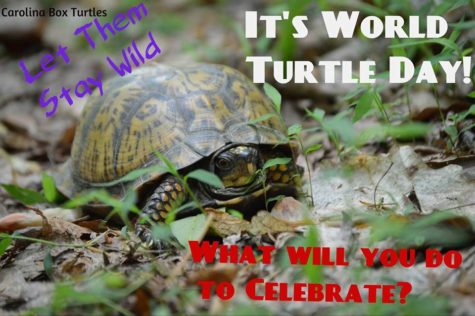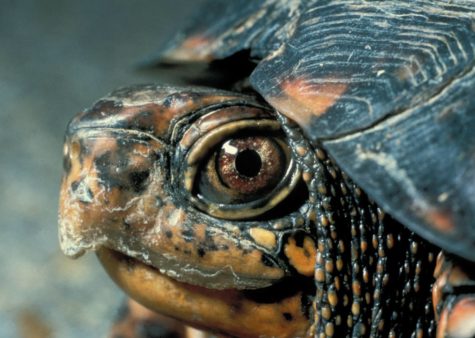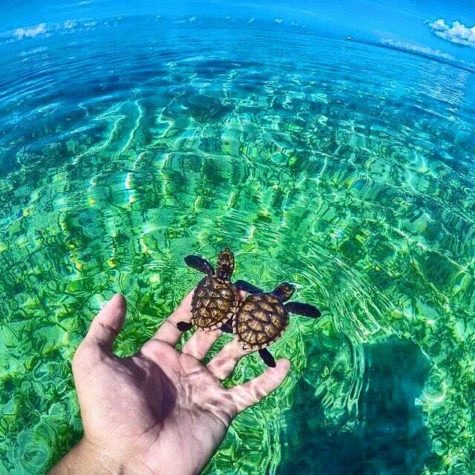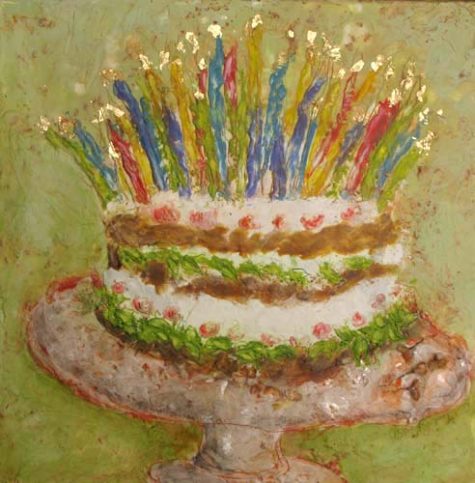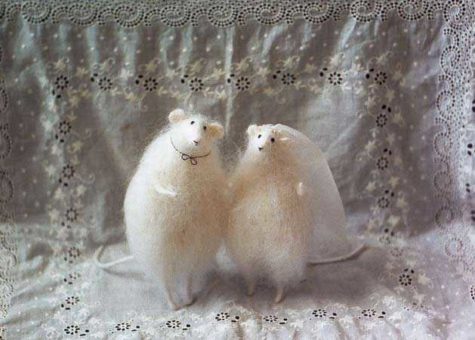Animals
People in the United States dedicate the first Sunday in May to commemorating the Humane Society, which was established to prevent cruelty to animals. Numerous organizations schedule fund-raising events today and extend compassion to both animals and people, in keeping with the festivities.
If you have the means, adopt an animal today or make a small donation to the Humane Society in your area so they can continue their work.
Back up your actions spiritually with this spell for animal welfare:
Gather any pictures of endangered species you can find. Put them insize a Ziploc bag while visualizing the white light of protection surrounding each. As you close the bag say:
Protected by Poluknalai’s command,
these creatures are safe across the land.
Sealed with love and magick within,
by my will this spell begins.
As long as the bag remains sealed and safe, it will continue generating protective magick for those animals.
Source: 365 Goddess
April 9th is National Unicorn Day. Although the holiday is observed all around the world, it has special significance in Scotland, where the unicorn is the national animal.
What mythological creature has been more beloved over the centuries than the unicorn? Symbols of purity and enchantment, unicorns are loved by both children and adults alike and are integral parts of many fairy tales and legends. For all the roles they’ve played in literature, cinematography, and art as a whole, unicorns more than deserve their own day!
Unicorn Day was created to celebrate these majestic creatures and help adults remember how much more fun life can be when we let a little magic in sometimes.
The unicorn was the symbol of purity, innocence, masculinity, and power in Celtic mythology. The day itself has its roots in Scotland, where the unicorn is the national animal. It is unknown how unicorns became associated with Scotland, but one theory says that it happened after narwhals were spotted there, far away from their usual home in the Arctic.
During the reign of William I, in the twelfth century, unicorns began being used on the Scottish royal coat of arms. On it, two unicorns are depicted having chains around their necks. As unicorns were seen as being such powerful animals, the chains may symbolize that the Scottish kings were so strong that they even were able to tame unicorns. In the fifteenth century, during the reign of King James III, two coins—known as the unicorn and half-unicorn—had unicorns on them.
Early depictions of unicorns appeared in Mesopotamian artwork, as well as in ancient myths in China and India. The Greek historian Ctesias referenced an animal with one horn in 400 BCE. He likely was referring to the Indian Rhinoceros, but he described the creature as having a white body and purple head, with a multicolored horn on its forehead. He wrote that the animal was very fast and that those who drank from its horn were protected from some illnesses.
There have been other legends about the power of unicorn horns. One says poisoned waters, such as rivers, can be purified with a unicorn horn so that other animals can drink it. Because of this, “unicorn horns” became very pricey, costing more than gold. These horns were actually made from the protruding tooth of narwhals. “Powdered unicorn horns” were sold in some London pharmacies until the mid-eighteenth centuries.
Unicorns were mentioned as far back as antiquity—ancient Greek writers believed they lived in the faraway and exotic country of India, which was then largely unknown to Europeans. However, the unicorn was then thought to be a powerful, fierce animal that was not to be meddled with.
In the Middle Ages, the unicorn’s image was based greatly on Bible passages that were thought to speak of these animals, and unicorns slowly came to be seen as a symbol of strength, the purest kind of love, and the pets of virgin women. In fact, there is even a sculpture of the Virgin Mary holding a unicorn on her lap and patting it in Warsaw’s National Museum.
The Christian Greek text Physiologus says that the only way a unicorn can be caught is with a virgin maiden. In that text, a unicorn jumps in the maiden’s lap, and she suckles it and takes it to the king’s palace. Because of this, the unicorn was compared to Christ. According to one other legend, Genghis Khan decided not to take over India because he came upon a unicorn that bowed down to him.
How To Celebrate!
One way to celebrate would be to practice a little bit of Unicorn Magick, there are a variety of Unicorn spells in our Book of Shadows. Or you could visit the Magickal Apothecary and create a Unicorn Protection Charm or Healing Sachet.
Another way to celebrate this day might be to find a fun, fanciful activity. How about inviting some friends over to bake colorful cupcakes or cookies? A quick google search will give you lots of ideas and recipes.
You can top them with colorful icing and sprinkles. Or bring in a plate of them to work and become everyone’s favorite person in no time!
More Ideas:
- Make some unicorn crafts.
- Read or watch The Last Unicorn.
- Read another book that is about or features unicorns.
- Pick up some unicorn-themed clothes.
- Buy a unicorn questing license. Lake Superior State University in Sault Ste. Marie, Michigan, has issued permits for “unicorn questing” since 1971.
- See The Hunt of the Unicorn at The Cloisters in New York City.
- Bravely go all out with the unicorn hair dye.
- Be a little more subtle with a rainbow of nail polish or a touch of glitter?
- Too Faced is even selling a whole range of unicorn inspired make-up.
Sources:
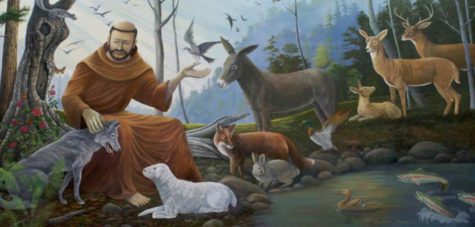
The blessing of pets and animals is a Catholic holy day often celebrated on October 4, the feast of St. Francis of Assisi, or on a Sunday near that date.
In the Scriptures, the act of blessing means ‘the imparting of power or life.’ The person performing the blessing is mediating that power from God or Christ to the person performing or the animal involved. To bless is more than an expression of goodwill and caring. To bless is to impart God’s power in person! The blessing of each animal, by name, means that health, healing and life are being mediated from God for the benefit of the animal in its relationship with its human partners. Be careful not to reinforce the separation of human animals and other animals by this blessing. Instead, consider reinforcing our common kinship by blessing ALL animals–human and otherwise.
A Prayer For Our Pets
Heavenly Father, our human ties with our friends of other species is wonderful and a special gift from you. We now ask you to grant our special animal companions your fatherly care and healing power to take away any suffering they have.
Give us, their human friends, new understanding of our responsibilities to these creatures of yours. They have trust in us as we have in you; our souls and theirs are on this earth together to give one another friendship, affection, and caring.
Take our heartfelt prayers and fill our ill or suffering animals with healing light and strength to overcome whatever weakness of body they have.
Your goodness is turned upon every living thing and your grace flows to all your creatures.
From our souls to theirs goodness flows, touching each of us with the reflection of your love.
Grant to our special animal companions long and healthy lives. Give them good relationships with us, and if you see fit to take them from us, help us to understand that they are not gone from us, but only drawing closer to you.
Grant our prayer through the intercession of Good St. Francis of Assisi, who honored you through all your creatures. Give him the power to watch over our animal friends until they are safely with you in eternity, where we someday hope to join them in giving you honor forever.
Amen
Blessing of All the Animals: A Sermon
Here’s a transcript of a catholic sermon by David Rhoads, often used as part of the services for the Blessing of the Animals. I thought it might be interesting to use it as a sort of template for any blessings that I might want to do today. While I am not a catholic, or even a follower of any christian religion, I did think it had possibilities as a jumping off point, and with some creative changes, it might be quite pagan and wonderful.
So, here it is, I’d love to see what you can do with it:
And God said, “Let the waters bring forth swarms of living creatures, and let birds fly above the earth across the dome of the sky.” So God created the great sea monsters and every living creature that moves, of every kind, with which the waters swarm and every winged bird of every kind. And God saw that it was good. And God blessed them, saying, “Be fruitful and multiply and fill the waters in the sea, and let birds multiply on the earth. . . . And God said, “Let the earth bring forth creatures of every kind: cattle and creeping things and wild animals of the earth of every kind.” And it was so. God made the wild animals of the earth of every kind, and the cattle of every kind and everything that creeps upon the ground of every kind. And God saw that it was good
~Genesis 1: 20-25
First, I want to address you varieties of dogs and cats and other creatures who are here today. And I want to speak with you fish and ferrets and hamsters and parakeets and snakes brought here today by your human companions. You are here for your own sake, and you also represent all those who are not here today, animals of every kind—cattle and goats and horses and elephants and bees and cougars and crocodiles and puffer fish and eels and insects—so many we cannot name them all.
I want to announce the good news to all you creatures. I want you to know that God loves you. God loves you for your own sake—and not because of what you can do for humans.
You are good in yourselves. The good book tells us that when God created you—fish of the sea and birds of the air and creatures of the land—God looked at all God had created, and God saw that “indeed, it was very good!”
When God created you, God blessed you. God told you to “Be fruitful and multiply and fill the earth.”
God created you in huge swarms and in great diversity. God wants all of you to survive and to thrive on Earth.God created the world for you, so that you have what you need to live.
The psalmist tells us that God made the rain to water the trees, the trees for you birds to nest, the grass for you cattle to graze, and the crags as a refuge for you mountain goats. God wants you to receive your “food in due season” and to be “filled with good things.”
The Bible tells us that when the flood came, God rescued each of your species through Noah in the ark. And God made a covenant with you fish of the sea and birds of the air and domestic animals and all animals on Earth to protect you for the future. God made the first “endangered species act.”
Just like us, you are called to worship God. The hills are to clap their hands. The fields are to exalt. You cattle and dogs and cats are to praise God by being who you are and exalting in it. John the seer had a vision in which he heard the entire creation—everything in heaven, on the earth, under the earth and in the sea—cry out in praise: “Blessing and honor and glory and power be to our God and to the lamb forever and ever.”
We human animals need to confess to you that we have systematically mistreated you, depleted your numbers, destroyed you, slaughtered you, crowded you out, neglected you, dealt with you as commodities in our quest for comfort and ease. We have not seen you as God’s creatures. We have not shown proper reverence or respect. Against God’s will, we have not set limits upon ourselves so that you might live and thrive. What we have done! We are sorry!
You who are here today are so fortunate because you have human companions who care for you. But so many of your cousins are threatened with extinction—snow leopards and timber wolves and green sea turtles and condors and paddlefish and fin whales among so many others. We humans may so crowd out or deplete these kin of yours that not a single one of them will ever again exist on Earth.
When we destroy you and diminish you in these ways, we not only compromise your ability to survive, we also stifle your capacity to praise God. Along with all creation, you are groaning in labor pains, waiting for the revelation of children of God who will care for creation and make provisions for you to thrive.
Now I want to address you human creatures. I want to announce the good news to you also. God loves you. God loves you for your own sake and wants you to thrive. When God made you; God saw that this too was good.
God said also to you: “Be fruitful and multiply and fill the Earth”. Yet we have already done this! So we need to find ways to limit the impact of our species, because God did not mean for us to crowd out the rights of other creatures to be fruitful and multiply also. In developed countries, we have become like an infestation—taking over land and destroying habitats and devouring species and infiltrating homes and migratory routes of so many other animals—and we need to learn our limits and exercise restraint.
God even created us humans with a special responsibility—to exercise dominion. This does not mean that we are to exercise domination over other creatures or to exploit them for human mis-use. Rather, we are to delight in other creatures, as God does, and respect and care for them. Our love for creation is the only basis for our right use of creation. We are to exercise dominion as servants of creation. As Jesus has said, we are not to lord over anyone, but be as slaves to all. We are to take responsibility for all creatures, to serve their needs, and to work to preserve them.
And we are to do this not with a sense of superiority but in solidarity with all other creatures. We were created to be together, to be companions to one another, to thrive all together. All animals are our cousins, our kin. And God made a covenant with us and with all other animals together. Admit it, we humans are also animals, primate mammals.
And Jesus was a mammal. Jesus was born and lived in solidarity with all of life. Jesus lived to care about all who were oppressed and made vulnerable and marginalized by society; and right now that includes most creatures, not just humans. Jesus died in order that God might reconcile to God’s self all things in creation.
In response to God’s love, we are freed to behave in ways that enable all of life to thrive together. You do not need to prove anything. You can set limits on yourselves. You can simplify your lifestyle so that others may survive and thrive. You can become aware the effects of your actions on other creatures and curtail your activity. You can act to establish and restore safe homes and habitats for those animals that are endangered.
Now I want to address all of you creatures together. I had this vision in a dream during sleep at night. I was in the front row of a cathedral looking at the scene before me during a service of communion. I saw the priest passing bread to the first person kneeling at the communion railing. As I looked, the next figure at the railing was a snake! It was curled at the bottom with its back arching up over the rail and with head straining forward to receive the grace of Christ. The next figure was another person. Next was a raccoon with paws up on the communion rail leaning forward to receive the grace of Christ. Then I saw a bird perched on the corner of the railing eating bread crumbs.
As I finished surveying this scene in my dream, suddenly the side walls of the cathedral fell away and outside was thick foliage of forest and jungle on each side with all manner of wild animals roaming around. In this moment, it seemed as if walls of separation had been removed and there was a seamless web of all creation praising God and exalting in the grace of Christ.
From the time I awoke from that dream until this day, I have never been able to think of worship in the same way again. I now see all of Earth as the sanctuary in which we worship, and I see myself invoking and confessing and giving thanks and praising God and offering myself in solidarity with all of life. May that vision also be your vision.
You who are here today are very fortunate because you and have a relationship of love and care and loyalty between yourself and your human or your pet companion. You model how all relationships between humans and other animals should be. We wish to project this relationship as the model for our human relationship with all animals. May we care about all animals as we care for our companions at home.
I invite you all to come forward for a blessing. Sometimes when we have a service for the Blessing of the Animals, we bless only the non-human animals, as if we ourselves are not also animals. Therefore, as an expression of solidarity with each other, I invite all of you—non-human animals and human animals alike—to come for a blessing together. We bless you as companions together and we bless your relationship:
“May God bless each of you with health and safety and well-being and long life. And may God bless your relationship together so that it may be filled with love and joy.”
Many churches celebrate the Feast of St Francis of Assisi on October 4 each year. The feast commemorates the life of St Francis, who was born in the 12th century and is the Catholic Church’s patron saint of animals and the environment. It is a popular day for pets to be “blessed”.
About St Francis
St. Francis of Assisi (1182-1226) was the founder of the Franciscan Order. The son of a wealthy merchant named Pietro di Bernardone, he publicly denounced his father’s wealth in 1206 and dedicated his life to prayer and serving the poor. Pope Innocent III eventually gave Francis and his followers permission to preach, and he ordained Francis a deacon. The followers of Francis were called Friars Minor, or “the lesser brethren.” Francis died on October 3, 1226, and was canonized in 1228.
Text from his Sermon to the Birds:
“My little sisters, the birds, much bounden are ye unto God, your Creator, and always in every place ought ye to praise Him, for that He hath given you liberty to fly about everywhere, and hath also given you double and triple rainment; moreover He preserved your seed in the ark of Noah, that your race might not perish out of the world; still more are ye beholden to Him for the element of the air which He hath appointed for you; beyond all this, ye sow not, neither do you reap; and God feedeth you, and giveth you the streams and fountains for your drink; the mountains and valleys for your refuge and the high trees whereon to make your nests; and because ye know not how to spin or sow, God clotheth you, you and your children; wherefore your Creator loveth you much, seeing that He hath bestowed on you so many benefits; and therefore, my little sisters, beware of the sin of ingratitude, and study always to give praises unto God.”
-Saint Francis of Assisi (c.1220)
From: Almanac.com Continue reading
We hear in them about parables of being slow and plodding, steady and methodical, and occasionally obsessed with Ninjitsu, news reporters, and pizza. We are, of course, talking about Turtles! Turtles are a type of reptile that exists in many environments through the word and have found their way into literature, poetry, and parable throughout the world’s history.
The first thing to know is that even though Turtles and Tortoises are not the same thing, this day is dedicated to celebrating and protecting both. World Turtle Day, May 23, is sponsored yearly by the American Tortoise Rescue (ATR) since 2000. This annually celebrated day shines a spotlight on care, conservation and awareness of the oldest living reptiles in the world, and celebrates these noble reptiles and their place in the world. The idea is to bring attention to, and increase knowledge of and respect for, turtles and tortoises, and encourage human action to help both the common box turtle, and the ever endangered sea turtle to survive and thrive.
Turtles and Tortoises
The two are often confused. Generally, turtles live and swim in the sea while tortoises are land-based. However, scientifically, “turtle” is used to describe any member of the order Testudine, which includes both turtles and tortoises!
There are seven species of sea turtles, of which the last four are classified as endangered or critically endangered:
- Flatback sea turtle (Natator depressus)
- Olive ridley sea turtle (Lepidochelys olivacea)
- Leatherback sea turtle (Dermochelys coriacea)
- Green sea turtle (Chelonia mydas)
- Loggerhead sea turtle (Caretta caretta)
- Kemp’s ridley sea turtle (Lepidochelys kempii)
- Hawksbill sea turtle (Eretmochelys imbricata)
Turtles can be found in most of the world’s oceans, with the exception of the Arctic and Antarctic. As adults, these omnivores can measure up to between 0.61 meters and 2.7 meters (2-9 feet) in length and can weigh up to 680 kilograms (1,500 pounds). All have a carapace (hard shell) except the leatherback, which has bony plates underneath leathery skin.
There are many species of tortoise, including the now-extinct Abaco tortoise (Chelonoidis albuyorum) and the saddle-backed Rodrigues giant tortoise (Cylindraspis vosmaeri). Most species of tortoise are herbivorous, with a few exceptions eating worms and insects.
Tortoises have the longest lifespans of any animal. In fact, the oldest ever tortoise (named Tu’i Malila) recorded was given to the Tongan family in 1777 by British explorer Captain Cook and lived to a grand old age of 188.
Giant tortoises move at a very leisurely pace of 0.27 kilometers per hour (0.17 miles per hour). Although tortoises are known for giving rise to the saying “slow and steady wins the race” from the Aesop fable The Hare and the Tortoise, the fastest recorded speed of a tortoise on land is a relatively zippy 8 kilometers per hour (5 miles per hour)!
In the wild, both tortoises and turtles are at risk from illegal hunting and poaching, oil spills, artificial light from coastal cities, and non-recyclable waste. As pets, these long-living reptiles can suffer greatly from improper care and handling.
Even if you like your reptiles fighting villains in the mean streets of New York City, carrying the four elephants of the Discworld through space or kidnapping Princess Peach, we can all do our part to ensure these majestic creatures are preserved, whether as pets or in the wild.
How to celebrate Turtle Day
World Turtle Day is celebrated around the globe in a variety of ways, from dressing up as turtles or wearing green summer dresses, to saving turtles caught on highways, to research activities.
- Note: If a tortoise is crossing a busy street, pick it up and send it in the same direction it was going – if you try to make it go back, it will turn right around again.
Contact American Tortoise Rescue on Facebook, or visit their website, and find out what you can do in your area to help promote the protection of turtles. If there’s no activities in your area, work with them to find out what you can do to coordinate with local aquariums, pet stores, and nature groups to focus on the species of this reptile that live in your area.
Other things you can do include the following:
- Never buy a turtle or tortoise from a pet shop as it increases demand from the wild.
- Report the sale of any turtle or tortoise of any kind less than four inches. This is illegal throughout the U.S.
- Report cruelty or the illegal sales of turtles and tortoises to your local animal control shelter.
- Never remove turtles or tortoises from the wild unless they are sick or injured.
- Write letters to legislators asking them to keep sensitive habitat preserved or closed to off road vehicles, and to prevent off shore drilling that can lead to more endangered sea turtle deaths.
History of Turtle Day
First created in 1990 by the American Tortoise Rescue, World Turtle day recognizes that some species of our hard (and soft!) shelled friends are suffering, almost on the edge of extinction due to environmental hazards and issues with hunting and harvesting of their eggs.
American Tortoise Rescue was created by Susan Tellem and Mashall Thompson, a married pair of animal activists who had a particular passion for tortoises. We all have to have something that drives us in this life, and for these two it was bonding over animal right’s activist work. Don’t think these two are just closet hippies with an overwhelming adoration for all things shelled and scaly. Susan is deeply involved with television arts & sciences and the public relations society of America while being a partner in Tellem Grody Public Relations Incorporated. They organize charity collections and works around the world to help protect these amazing critters, and created Turtle Day to get everyone involved and spread awareness of the shrinking habitat and declining numbers of these sensitive creatures.
The seventh day of the Chinese New Year, traditionally known as Rénrì (人日, the common man’s birthday), is the day when everyone grows one year older. In some overseas Chinese communities in Southeast Asia, such as Malaysia and Singapore, it is also the day when tossed raw fish salad, yusheng, is eaten for continued wealth and prosperity.
This day is filled with omens about human fate. For example, any person or animal born on this day is considered doubly blessed and destined for prosperity. So, consider taking out a divination tool today and seeing what fate holds for you.
In Chinese mythology, Nüwa is the goddess who created the world. She created the animals on different days, and human beings on the seventh day after the creation of the world. The order of creation is as follows:
- First of zhengyue: Chicken
- Second of zhengyue: Dog
- Third of zhengyue: Boar
- Fourth of zhengyue: Sheep
- Fifth of zhengyue: Cow
- Sixth of zhengyue: Horse
- Seventh of zhengyue: Human.
Hence, Chinese tradition has set the first day of zhengyue as the “birthday” of the chicken, the second day of zhengyue as the “birthday” of the dog, etc. And the seventh day of zhengyue is viewed as the common “birthday” of all human beings.
To generate Nüwa’s luck or organizational skills in your life, make and carry a clay Nüwa charm. Get some modeling clay from a toy store (if possible, choose a color that suits your goal, like green for money). If you can’t get clay, bubblegum will work, too. Shape this into a symbol of your goal, saying:
From Nüwa blessings poured,
Luck and order be restored.
Renri is the day, when all common men are growing a year older and the day is celebrated with certain foods according to the origin of the people. The ingredients of the dishes have a symbolic meaning and they should enhance health.
To honour Nüwa’s creation of animals either vegetable dishes will be eaten or a raw fish and vegetable salad called yusheng. Yusheng literally means “raw fish” but since “fish (鱼)” is commonly conflated with its homophone “abundance (余)”, Yúshēng (鱼生) is interpreted as a homonym for Yúshēng (余升) meaning an increase in abundance. Therefore, yusheng is considered a symbol of abundance, prosperity and vigor.
Almost no Chinese celebrate on this day. Some people just eat potatoes with angel hair noodle. The long noodle stands for longevity. In the past, seven vegetables which can repel the evil spirits and sickness away were eaten. They are as follows:
- Celery, Shepherd’s Purse Spinach, Green Onion, Garlic, Mugwort and Colewort
Ancient Chinese had a tradition of wearing head ornaments called rensheng, which were made of ribbon or gold and represented humans. People also climbed mountains and composed poems. Emperors after the Tang dynasty granted ribbon rensheng to their subjects and held festivities with them. If there were good weather on Renri, it was considered that people will have a year of peace and prosperity.
Fireworks and huapao are lit, so Renri celebrates the “birthday” of fire as well.
Since the first days of zhengyue are considered “birthdays” of different animals, Chinese people avoid killing the animals on their respective birthdays and punishing prisoners on Renri.
Nowadays in zhengyue, Renri is celebrated as part of the Chinese New Year. Chinese people prepare lucky food in the new year, where the “seven vegetable soup,” “seven vegetable congee” and “jidi congee” are specially prepared for Renri. Malaysian and Singaporean Chinese use the “seven-colored raw fish” instead of the “seven vegetable soup”.
In Japan, Renri is called Jinjitsu. It is one of the five seasonal festivals. It is celebrated on January 7. It is also known as Nanakusa no sekku, “the feast of seven herbs”, from the custom of eating seven-herb kayu to ensure good health for the coming year.
The celebration of the feast in Japan was moved from the seventh day of the first lunar month to the seventh day of January during the Meiji period, when Japan adopted the Gregorian calendar.
Sources: 365 Goddess and wikipedia
This ritual is linked to chasing away mice from the house and village and is observed on different days in different areas. In many places, this coincides with the Day of Martyr Nestor of Thessalonica, (October 27), or the day after the Day of the Archangel Michael (November 8th).
On this day, no one should utter the word ‘mouse,’ lest.they hear their name and decide that they have been invited to stay at or come to your house. This day is traditionally honored by women. No household work is done, so that mice do not harm the house or the grain. Skirts are sewn up the front and the back as a symbolic “sewing up” of the mice’s eyes. Fireplaces might also be (temporarily) sealed, so that the eyes and mouths of the mice are similarly covered.
Then the Mice Wedding is performed. Calling them “lad” and “lady”, a male and a female mouse are dressed as bride and groom and married in a ritual typical to a human wedding of the region. They are then placed in a basket and marched through the village in a solemn procession, The newly weds are then taken far as away from the village where they are set free, or more commonly, taken to the river and ceremonially drowned.
The idea being that the other mice in the village would be inspired to follow the procession out of the village. Marriage was the most common cause of a change in place to live, and by all means a wedding is the prerequisite for establishing a new home and a new family. Alternatively, the other mice would be so frightened by the sudden drowning of the happy couple that they would never return to the village.
If however, despite the ritual performed on Mice’s Day, the little rodents still managed to breed in hordes, it was considered a sign that someone was secretly stealing something away from the household, either food or household items. And in most cases suspicion fell on daughters-in-law and young farmhands who were not blood relations.
A cautionary tale:
Once a married man was taking away more items and clothes on the sly to give them to his mistress. Once his wife found out about the betrayal, she took the matter to the judge. The judge summoned the disloyal husband and demanded an explanation. The man denied the whole time, until finally the wounded wife blurted out the last and uncontested proof, namely that the mice in the house had bred in unusually high numbers. Then the cheating husband admitted his shame and confessed he was taking those gifts to another woman.
Another common explanation of the phenomenon of mice that continued to breed was that the family members were in discord, either daughters-in-law quarreled with one another, or refused to respect their father and mother-in-law, or possibly, the sons did not obey their own fathers’ will.
Collected from various sources
